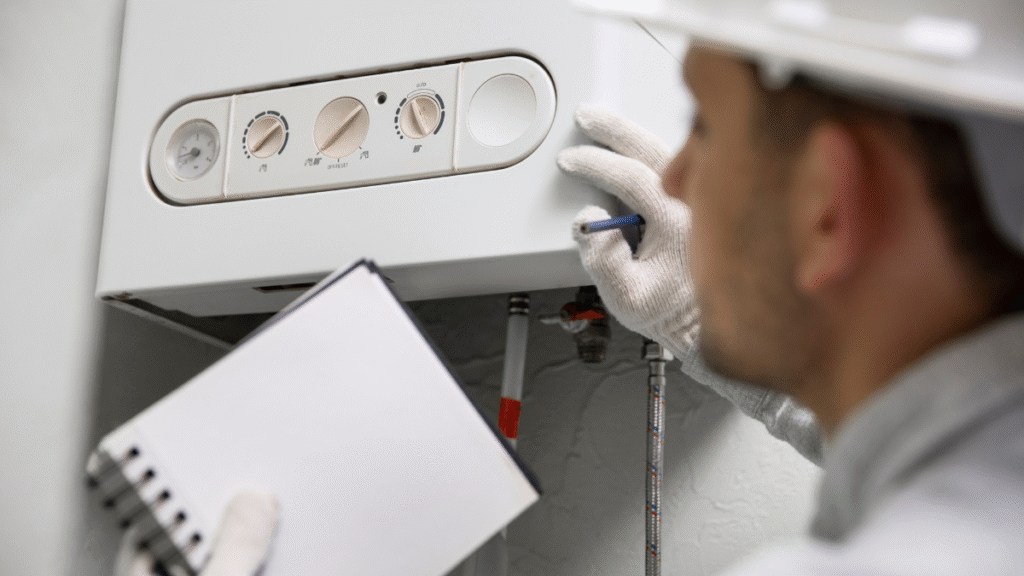A home’s heating system is one of the most critical components for ensuring comfort, safety, and energy efficiency, particularly during colder months. Over time, furnaces naturally age, lose efficiency, and become more prone to malfunctions, which can result in higher energy bills, inconsistent heating, frequent repairs, and declining indoor air quality. Homeowners often face the decision of whether to continue repairing an older system or to invest in a complete furnace replacement. Making this choice proactively allows for uninterrupted comfort, long-term cost savings, and enhanced reliability, preventing the stress and expense associated with emergency breakdowns. Understanding the process of replacing a furnace, recognizing the signs of system deterioration, and selecting the right model are essential steps for anyone seeking to maintain a comfortable and efficient home environment.
Signs Your Furnace Needs Replacement
Furnaces typically last between fifteen and twenty years depending on usage, fuel type, and maintenance history, and recognizing the signs of a failing system can help homeowners plan a replacement before it becomes critical. One of the most noticeable indicators is a steady increase in energy bills, as older furnaces often require more fuel or electricity to produce the same level of heat. Another sign is the frequency and cost of repairs; when maintenance calls become regular or components require repeated replacement, investing in a new system often becomes the more economical choice. Uneven heating in different areas of the home can also indicate that the system is struggling to distribute heat efficiently, while unusual noises, such as rattling or banging, or strange odors may suggest mechanical problems or even safety hazards. Short-cycling, which occurs when a furnace frequently turns on and off, is another symptom that the system is operating inefficiently and approaching the end of its useful life. Recognizing these signs early allows homeowners to plan for a furnace replacement, ensuring that their home remains safe, warm, and energy-efficient without unexpected disruptions.
Benefits of Furnace Replacement
Investing in a furnace replacement provides far-reaching benefits that extend beyond simply restoring heat to the home. Modern furnaces are designed with significantly higher energy efficiency, which reduces fuel consumption and lowers monthly utility costs. Advanced features such as variable-speed blowers, multi-stage burners, and integrated smart thermostat compatibility allow for precise temperature control, even heat distribution, and quieter operation compared to older systems. The improved air filtration found in new furnaces removes dust, allergens, and other airborne particles, contributing to better indoor air quality and a healthier living environment. Safety is another key advantage; older systems are more prone to malfunctions, including potential cracks in the heat exchanger that could lead to carbon monoxide leaks. By replacing an outdated system, homeowners eliminate these safety concerns while enjoying enhanced performance, reduced maintenance requirements, and long-term cost savings.
Choosing the Right Furnace
Selecting the appropriate furnace for replacement is critical to ensure efficiency, comfort, and long-term reliability. The size of the furnace must be matched to the home’s square footage, ceiling height, insulation, and layout to avoid underperformance or short-cycling. Homeowners should also consider the fuel type whether gas, electric, or propane based on availability, efficiency, and cost considerations. Efficiency ratings, expressed as AFUE (Annual Fuel Utilization Efficiency), indicate how effectively a furnace converts fuel into heat, and choosing a high-efficiency model maximizes energy savings over time. Modern features, including programmable and smart thermostats, variable-speed blowers, and multi-stage burners, offer customized heating that adjusts to household demand, ensuring comfort while reducing energy waste. Balancing upfront cost with long-term operational savings is crucial, and selecting the right system ensures that a furnace replacement delivers both immediate and enduring benefits.
Preparing Your Home for Furnace Installation
Proper preparation before installation is essential to guarantee a smooth and efficient process and to maximize the performance of the new furnace. Homeowners should clear the area surrounding the existing system to provide technicians with adequate access and inspect ductwork for leaks, blockages, or poorly connected sections that could compromise airflow and efficiency. Cleaning and sealing ducts before installation ensures that the new furnace can operate at peak performance. Upgrading to a programmable or smart thermostat during replacement enhances energy efficiency by optimizing heating schedules and providing precise temperature control. Home improvements such as enhancing insulation, sealing gaps around doors and windows, and ensuring vents are free of obstructions further improve system performance and efficiency. By taking these preparatory steps, homeowners ensure that the new furnace operates safely and reliably while delivering maximum comfort.
The Furnace Replacement Process
Professional installation of a new furnace involves several critical steps to ensure safety, efficiency, and longevity. The process begins with the removal of the old system, including disconnecting fuel, electrical, and duct connections and safely disposing of or recycling the outdated unit. Site preparation follows, which may include adjusting ductwork, updating electrical or gas lines, and ensuring compliance with current safety standards. The new furnace is then installed, secured, and connected to the home’s utilities and duct system. Once installation is complete, technicians conduct thorough testing to verify airflow, ignition, safety controls, and overall performance. Finally, homeowners receive a comprehensive walkthrough, including guidance on operating the system, performing routine maintenance, and identifying early warning signs of potential issues. Following these steps guarantees that a furnace replacement is performed correctly, providing reliable heating for many years.
Maintaining Your New Furnace
After a furnace replacement, regular maintenance is essential to preserve efficiency, extend system lifespan, and ensure safe operation. Homeowners should replace air filters according to the manufacturer’s guidelines, schedule annual professional inspections to detect potential issues early, and keep vents and returns clear of obstructions to maintain proper airflow. Monitoring the system for unusual noises, odors, or performance changes can prevent minor issues from developing into major problems. Keeping the area around the furnace free of clutter and maintaining adequate clearance allows technicians to perform maintenance efficiently and safely. Consistent care ensures that the new furnace operates efficiently, provides even heat, and maintains indoor air quality for many years.
Financial and Environmental Advantages
Investing in a modern furnace offers both financial and environmental benefits. High-efficiency models consume less fuel, reducing monthly utility bills, while also lowering greenhouse gas emissions and decreasing the home’s overall environmental footprint. Many energy-efficient systems qualify for rebates, incentives, or tax credits, which help offset the initial investment cost. From a financial perspective, a furnace replacement reduces ongoing repair expenses, improves energy management, and can increase the value of a home. Modern systems provide peace of mind, long-term comfort, and efficiency, making replacement a practical and environmentally responsible decision.
Conclusion
A furnace replacement is a strategic investment that enhances home comfort, energy efficiency, safety, and long-term savings. By recognizing the signs of an aging system, selecting the appropriate model, preparing the home for installation, and maintaining the new furnace properly, homeowners can ensure reliable performance for many years. Modern furnaces offer higher efficiency, improved indoor air quality, and advanced safety features, making replacement a financially and practically sound decision. Taking a proactive approach to upgrading a heating system prevents costly repairs, eliminates unexpected breakdowns, and provides consistent warmth, creating a comfortable, safe, and energy-efficient home for the long term.







